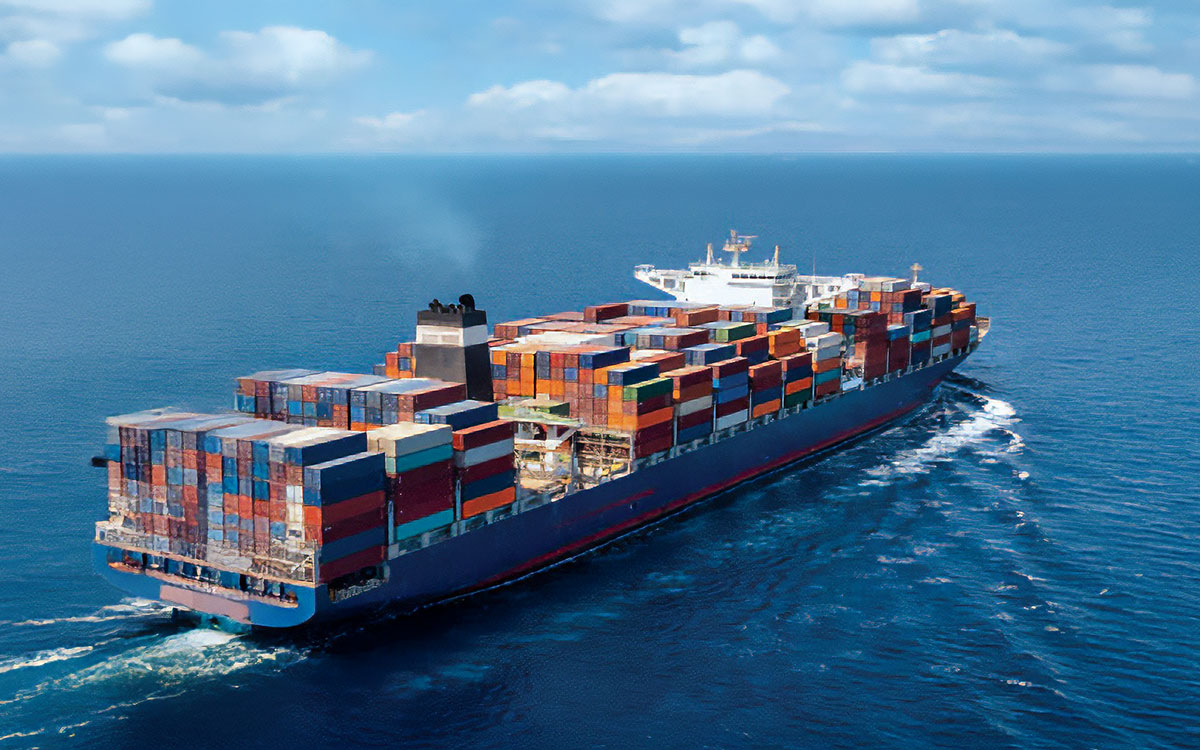Fortifying Minerals Diplomacy: Four Nations, Four Solutions
The Quad—an alliance of the U.S., India, Japan, and Australia—is emerging as a strategic force in critical minerals diplomacy while countering China’s growing influence in the Indo-Pacific.
BY MAHNAZ KHAN

Art–iStockPhoto/Hansche
President Donald Trump’s Executive Order 14154, “Unleashing American Energy,” released the day of the inauguration, indicated that the new administration is prioritizing U.S. mining and mineral processing and, in particular, non-fuel minerals including rare earth minerals. Further, the order mandates the Secretary of State to pursue opportunities along these lines through the Quadrilateral Security Dialogue, or the Quad.
An alliance of the United States, India, Japan, and Australia, the Quad aims to counter China’s growing influence in the Indo-Pacific through military cooperation, economic security, and technological collaboration while promoting a free and open regional order. Initially formalized in 2007, the Quad remained largely inactive until it was revived in 2017 during President Trump’s first term, and now, all signs suggest it is poised for a stronger resurgence.
Notably, no other executive orders have outlined alternative frameworks for securing critical minerals. And just one day after the inauguration, Secretary of State Marco Rubio convened a high-level Quad meeting, where leaders reaffirmed their commitment to economic and technological security while fortifying supply chains against mounting global threats.
A Natural Fit for Critical Minerals
Why is the Quad emerging as a strategic force in critical minerals diplomacy? The answer lies in its members’ supply chains, trade alliances, and business investments.
Supply Chain Synergies. The Quad nations are naturally positioned to strengthen global critical minerals supply chains, each contributing a key piece of the puzzle.
Australia leads the world in lithium mining, producing 37 percent of global supply, a resource vital for electric vehicles (EVs), drones, and battery storage. The country also holds the world’s largest zinc reserves (28 percent) and is a crucial source of germanium and gallium, both essential for semiconductors—the foundation of modern electronics, from smartphones to advanced defense systems.
While Australia has a competitive advantage in extraction, Japan is a leader in mineral processing, refining rare earth elements, lithium, cobalt, and nickel, all of which are essential for high-tech industries. Meanwhile, the United States and India are focusing on expanding domestic mining and refining operations, with government-backed initiatives aimed at reducing dependence on Chinese-controlled supply chains.
Further down the supply chain, the United States boasts an advanced industrial base for semiconductor and battery production, while India is rapidly expanding its own capacity in these sectors. Together, the Quad nations are uniquely positioned to leverage their respective strengths in building a secure, resilient, and self-sufficient mineral supply chain.
Trade Alliances. The Quad nations share more than just supply chain synergies; they also maintain strong trade alliances that reinforce their economic cooperation. The United States has a free trade agreement with Australia, a critical minerals agreement with Japan, and recently initiated negotiations for a multisector bilateral trade agreement with India following Prime Minister Narendra Modi’s February 2025 state visit.
Besides the U.S., Quad nations have trade alliances with each other. Australia and India are linked through the India-Australia Economic Cooperation and Trade Agreement, while Australia and Japan benefit from the Japan-Australia Economic Partnership Agreement. Additionally, India and Japan maintain trade relations through the Comprehensive Economic Partnership Agreement. All four Quad members also participate in the Minerals Security Partnership, a U.S. State Department initiative focused on securing global mineral supply chains.
These deep trade ties not only enhance economic resilience among Quad nations but also position the Quad as a viable counterweight to China’s mineral dominance.
Quad-Backed Business Investments. Quad partners are making strategic investments in one another’s critical minerals supply chains, with a particular focus on strengthening the U.S. industrial base. The U.S. Department of Defense is backing Lynas Rare Earths, an Australia-headquartered company, to establish a rare earth processing facility in Texas using Australian-mined materials. India is also deepening its footprint in U.S. supply chains, with Epsilon Advanced Materials investing $650 million in a graphite processing plant in North Carolina to support lithium-ion battery production. Meanwhile, Japan is reinforcing rare earth access through a supply chain agreement between California-based MP Materials and Sumitomo Corporation, ensuring a stable flow of rare earth elements for electric vehicle motors.
The U.S. Role in Fortifying Quad’s Mineral Diplomacy
The Quad has the potential to establish a powerful critical minerals trifecta by integrating supply chains, securing strategic investments, and strengthening trade alliances. The missing link, however, lies in greater diplomatic coordination among Washington policymakers and the U.S. Foreign Service stationed in Quad nations to bolster each other’s critical minerals security. It is important to drive investment and deepen partnerships to ensure mining and processing remain within Quad economies or the larger Quad supply chain—to establish a mineral supply chain independent of China.
Here are four recommendations on how the U.S. can support these goals:
Develop Lithium Processing Capacity Within the Quad. The U.S. should help to facilitate the development of alternative lithium processing hubs within Quad nations as global demand for lithium is set to surge: It is projected to rise by 90 percent over the next two decades, according to the International Energy Agency. Lithium, vital for EV batteries, grid storage, and defense applications, is currently dominated by China, which controls 60 percent of the world’s lithium refining and processing. Despite being the world’s largest lithium producer, Australia exports 99 percent of its lithium concentrate to China because it lacks a domestic processing infrastructure.
To break this dependency, Quad nations should invest in lithium refining and lithium-ion battery processing capacity within the Quad. Japan, with its advanced lithium refining expertise, is already making strides. Toyotsu Lithium Corporation recently launched Japan’s first lithium hydroxide plant, while Sumitomo Corporation is partnering with Liontown Resources to create an integrated supply chain from Australian lithium mines to battery production. India, too, is stepping up, with government-backed incentives fueling private sector investment in lithium refining to support EV battery manufacturing.
Meanwhile, the U.S. is ramping up domestic processing, with companies like Tesla, Stardust Power, and Piedmont Lithium set to scale up lithium processing and battery production this year.
The missing link lies in greater diplomatic coordination among Washington policymakers and the U.S. Foreign Service stationed in Quad nations to bolster each other’s critical minerals security.
Collectively Invest in Africa to Create an Ethical Cobalt Supply Chain. The U.S. should coordinate with Quad leaders to accelerate private and public sector investments in Africa’s cobalt sector to counter China’s dominance in cobalt refining and ensure an ethical supply chain. To reduce reliance on Chinese processing, the Quad should invest in alternative refining hubs—either within Africa or in their own territories—while ensuring these supply chains prioritize fair labor practices, environmental responsibility, and transparent governance. Although both Australia and Japan have cobalt refining capabilities, the scale is inadequate to challenge China’s grip on the cobalt supply chain.
The Democratic Republic of the Congo (DRC) accounts for three-fourths of global cobalt mine production, but more than 80 percent of its cobalt mines are controlled by Chinese firms. Worse, DRC’s cobalt industry is plagued by forced labor, hazardous conditions, and severe environmental degradation, mainly as a result of Chinese practices. The cobalt supply chain has been further destabilized by the DRC government’s recent four-month export ban on cobalt, imposed in response to plummeting global prices, which has disrupted supply chains and heightened uncertainty in the market. Meanwhile, the resurgence of March 23 Movement rebels, a Tutsi-led paramilitary group, near the Rwandan border could potentially extend to threaten cobalt mining operations, adding another layer of geopolitical risk.
Although the Quad has yet to establish large-scale cobalt investments in the DRC, the U.S. can play a pivotal role in fostering collaboration. Leveraging funding mechanisms such as the Development Finance Corporation, the Export-Import Bank (EXIM), or any other restructured financial initiatives under the current Trump administration, the U.S. can help lay the groundwork for responsible investment in Africa.
Coordinate Quad Funding Streams to Collectively Invest in Critical Minerals Projects. The U.S. should coordinate with Quad partners to strategically align their financial resources to develop processing infrastructure both domestically and in mineral-rich regions. A coordinated investment strategy—driven by public and private capital and reinforced through U.S. diplomatic engagement—will ensure critical minerals are sourced, processed, and traded within trusted Quad alliances.
The Quad Investors Network (QUIN) is a critical private sector investment avenue. This independent, membership-based forum brings together leading industry figures, government entities, capital market participants, and academic organizations from Quad nations to mobilize funding for critical and emerging technologies. QUIN has already facilitated investments like India’s Epsilon Advanced Materials’ $650 million battery materials plant in North Carolina, strengthening the Quad’s ability to control its own battery supply chains.
Alongside private investment, each Quad nation has dedicated government-backed financial mechanisms that, if aligned, could significantly reduce investment risks and accelerate project development. Entities like the U.S. Export-Import Bank’s China and Transformational Exports Program (CTEP), or any newly structured or established financing entities under this administration, can assist in developing alternative supply chains by offering competitive loans and export financing to counter China’s dominance.
Japan and India also play an important role in securing critical minerals assets through the Japan Organization for Metals and Energy Security (JOGMEC) and Khanij Bidesh India Ltd. (KABIL). JOGMEC, a state-backed Japanese entity, funds overseas mining projects, facilitates joint ventures, and provides financial assistance to secure stable supplies of rare earths, cobalt, and nickel—resources vital for Japan’s advanced manufacturing sector. KABIL, a joint venture of Indian state-owned enterprises, was created to identify, acquire, and develop critical minerals resources abroad to reduce India’s dependence on China. KABIL is actively engaging in partnerships in Africa and Latin America to secure lithium and rare earth elements essential for India’s growing EV and defense industries. Australia also actively invests in critical minerals projects abroad through its $4 billion Critical Minerals Facility, managed by Export Finance Australia (EFA).
By pooling financial resources through both government-backed institutions and private investment networks, Quad nations can collectively lower investment risks, scale up mineral processing within trusted networks, and build an independent supply chain outside China.
Form a Quad Minerals Agreement or Quad Minerals Security Pact. The U.S. government should lead efforts to formalize a Quad minerals strategy to counter China’s weaponization of critical minerals. Such a strategy could utilize two primary plurilateral trade approaches: a Quad Minerals Agreement to strengthen trade relationships or a Quad Minerals Security Pact to push back against China’s market manipulation.
The Quad Minerals Agreement would function as a formalized plurilateral critical minerals trade agreement to enhance collaboration among Quad countries. This agreement would streamline trade, investment, and supply chain coordination to secure access to battery dual-use minerals like lithium, cobalt, and nickel while reducing dependency on China.
Alone or in addition to the above, a Quad Minerals Security Pact could serve as a collective response mechanism to counter China’s coercive trade tactics. Inspired by a recommendation from the U.S.-China Economic and Security Review Commission’s latest report to Congress, this pact would allow Quad nations to coordinate countermeasures against China’s flood of subsidized, underpriced mineral exports that destabilize global markets. A loose precedent for such an effort exists—when the U.S., EU, and Japan jointly sued China at the World Trade Organization (WTO) in 2012 over its export restrictions on rare earths, tungsten, and molybdenum. The WTO ultimately ruled against China in 2014, proving that coordinated action can push back effectively.
As the race for critical minerals accelerates, the U.S. Foreign Service’s role will be pivotal in transforming the Quad’s critical minerals strategy from an ambitious initiative into a tangible reality—one that builds a resilient, independent supply chain free from China’s grip.
When sharing or linking to FSJ articles online, which we welcome and encourage, please be sure to cite the magazine (The Foreign Service Journal) and the month and year of publication. Please check the permissions page for further details.
Read More...
- “From Guitars to Gold: The Fruits of Economic Diplomacy,” The Foreign Service Journal, January-February 2019
- “The Case for a Quad Mineral Security Partnership” by Abhishek Sharma, The Observer Research Foundation, October 2024
- “Trump’s sectoral-trade pivot: What it will take to succeed” by Mahnaz Khan, The Atlantic Council: GeoTech Cues, March 2025





